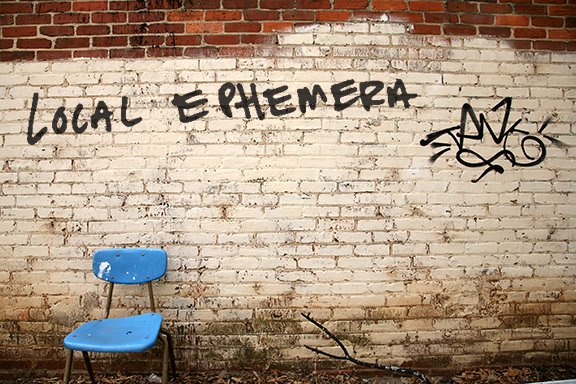
Kiang Gallery has got a whole new vibe this month with Pandra William's series of sculptures entitled "Munusculi Tantilli, Very Small Gifts." Instead of the gallery's more typical showing technologically savvy works of social commentary or formalism, this show returns to a more primal naturalism.
 "Auspicium Brieseum"
"Auspicium Brieseum"William's sculptures of stoneware, terrasigillata (?), engobe (?), and encaustic are forms derived from studying "plant/fungi interactions" and "planktonic organisms." The titles are a mixture of Latin and English with incorrect syntax and spelling in order to, much like with the sculptures, create something entirely unique while referencing science.
 "Dehisco Origio"
"Dehisco Origio"There is a definite squirmy sort of sexuality to the work. Like tadpoles or sperm, the sculptures hint at the life force of reproduction and growth. The sculptures appear to be in mid-motion on the wall - frozen in a caress or rare permittance to the guarded insides.
 "Curallium Enatarum"
"Curallium Enatarum"These are the creatures you would find under the lens of a microscope examining the fluids found in the Atlantic Station "pond" or somewhere along the banks of the Chattahoochee (south of the city).
 "Tinabeau Coruscarens"
"Tinabeau Coruscarens"This reminds me of one summer when I was a kid on vacation along the South Carolina coast and all of these sea slugs started washing up on the shore or while swimming one would lazily float by. They were bizarre little things, looking much like the sculpture above except greenish/yellow instead of purple. My cousin and I spent the week catching them, examining them, giving them names, pretty sure we were discovering some new species. I've never seen them on the coast of SC since then - maybe they were diverted along the wrong channel for a season - global warming no doubt.
 "Orb Istringere"
"Orb Istringere"
The layout of the gallery for the show was well done and gave the larger sculptures the needed breathing room. The sterility of the white space added to the sense of being in a laboratory. I almost wish this aspect had been played up, perhaps using laboratory tables instead of pedestals and enclosing "specimens" in glass cases.


Probably my only misgiving with the sculptures is the surface texture. Williams is using stoneware, and while the coloring is done flawlessly, the texture is left mat and rough. For creatures such as these, they ought to be slick and wet, dripping and slippery. This lack of glistening surface prevented me from having that desire to touch the sculptures or to react with the disgusted curiosity the sculptures were surely meant to inspire.

 "Epithalamium Spineum"
"Epithalamium Spineum"There was a lot of attention to detail in the design of the organisms. They are eerily believable and I left the show wondering about William's intention. They seem to be a meditation on life forms; evolution, reproduction, survival through symbiotic relationships and adaptation, possibly even extinction as all of these sculptures give the sense of vulnerability, threatening to shrivel up beyond their suspended motion.
I was reminded of Atlanta sculptors Caroline Smith and Julia Hill who also use organic forms, derived in some way from existing life forms, but in both of their works there is more of a focus on integrating the sculptures into the surrounding environment and in abstracting the forms for a wider interpretation by the viewer. Williams by contrast seems more focused on fully realizing (through detailing and illustrating) specific creatures from her own mind.
 "Pervagus Nubigena"
"Pervagus Nubigena"
Paired with William's work is a show of paintings by Laura Bell titled "Morphosis."
It makes sense to pairs these two as Bell's paintings are light hearted ventures into a strange world of blooming, spiraling, and draping plant-like forms. Like Williams, Bell is also inspired by microscopic organisms and cellular structure.
 "Hydrilla #11" Acrylic on Panel 2007
"Hydrilla #11" Acrylic on Panel 2007 Detail "Hydrilla #11" Acrylic on Panel 2007
Detail "Hydrilla #11" Acrylic on Panel 2007
There is an interesting comparison between these paintings and those by Jiha Moon currently at Saltworks Gallery. Both artists use extreme detail and create strange environments of morphing lines moving the viewer's eye through the space of ever changing depth. But
Bell keeps a tighter control over her medium and does to use the spontaneity of materials to help direct her work or create forms. While Moon's paintings give the sense of exploding outward, Bell's paintings seem to slink inwards, tightening their coils.
 Detail "Salvinia #1" Acrylic on Panel 2007
Detail "Salvinia #1" Acrylic on Panel 2007Moon's work is also more culturally based, examining the East and West, while Bell writes about her work that "this rampant growth could recall the enchanted, yet sinister world of a child's fairy tale, the strange and unsettling beauty of deep-sea life, or the mutation of a cellular structure by a virus or disease."
 Detail "Hydrilla #10" Acrylic on Panel 2007
Detail "Hydrilla #10" Acrylic on Panel 2007Both shows are up at Kiang Gallery until February 23rd 2008. Check 'em out.


No comments:
Post a Comment